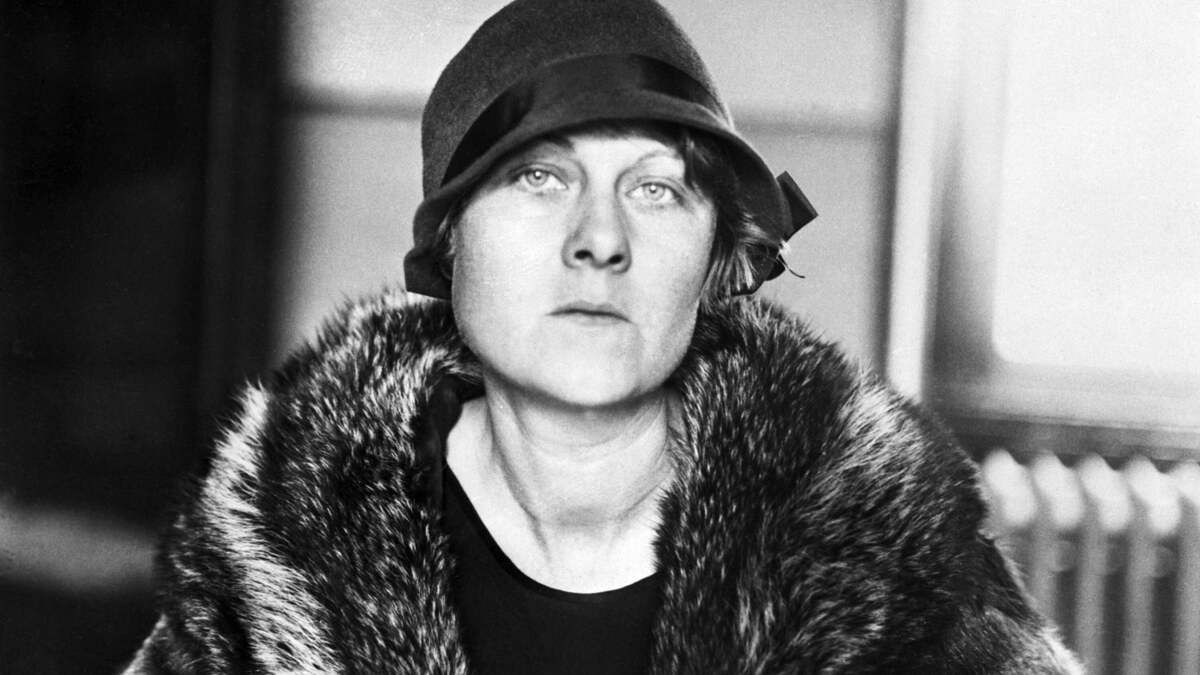
Who was Ruth Snyder? Ruth Snyder was a notorious figure in the 1920s, infamous for her involvement in one of the most sensational murder cases of the era. She was convicted of murdering her husband, Albert Snyder, with the help of her lover, Judd Gray. The case grabbed headlines due to its scandalous details and the dramatic trial that followed. Ruth's execution in the electric chair at Sing Sing Prison became even more infamous when a photograph of her final moments was secretly taken and published. This case not only shocked the public but also highlighted the era's fascination with crime and punishment. Buckle up as we delve into 35 intriguing facts about Ruth Snyder's life, crime, and legacy.
Key Takeaways:
- Ruth Snyder's notorious crime and execution captivated the public, sparking debates on media ethics and the death penalty. Her story remains a cautionary tale of betrayal and its consequences.
- Ruth Snyder's life and crime continue to fascinate and educate, shaping discussions on gender, crime, and the power of the press. Her story reflects the complexities of human behavior and justice.
Ruth Snyder: A Notorious Figure in Crime History
Ruth Snyder's life and actions have fascinated many. Her story is filled with intrigue, betrayal, and a sensational trial. Here are some compelling facts about her.
-
Ruth Snyder was born on March 27, 1895. She grew up in Queens, New York, and lived an ordinary life until her infamous crime.
-
She married Albert Snyder in 1915. Albert was an art editor for a magazine. Their marriage was far from happy, leading to tragic consequences.
-
Ruth began an affair with Henry Judd Gray. Gray was a corset salesman. Their relationship played a crucial role in the crime.
-
She convinced Gray to help murder her husband. Ruth and Gray plotted to kill Albert for his life insurance money.
-
The murder took place on March 20, 1927. They staged the crime to look like a burglary gone wrong.
-
Albert Snyder was bludgeoned and strangled. The brutality of the crime shocked the public.
-
Ruth and Gray were quickly arrested. Their poorly executed plan led to their swift capture.
-
The trial became a media sensation. Newspapers covered every detail, making Ruth Snyder a household name.
-
Ruth Snyder was convicted of first-degree murder. The jury found her guilty after a highly publicized trial.
-
She was sentenced to death. Ruth received the death penalty for her role in the murder.
The Execution and Its Impact
Ruth Snyder's execution was as sensational as her trial. It left a lasting impact on the public and the media.
-
Ruth Snyder was executed on January 12, 1928. She was put to death in the electric chair at Sing Sing Prison.
-
Her execution was the first to be photographed. A hidden camera captured the moment, causing widespread controversy.
-
The photograph appeared on the front page of the New York Daily News. It shocked readers and sparked debates about the ethics of such images.
-
Ruth Snyder's case influenced public opinion on capital punishment. The graphic nature of her execution photo led to discussions about the death penalty.
-
Her story inspired various works of fiction. Books, movies, and plays have been based on her life and crime.
-
The case highlighted the role of women in crime. Ruth's actions challenged traditional views of women as passive and non-violent.
-
Ruth Snyder's execution was one of the last publicized electrocutions. The controversy surrounding her death led to changes in how executions were reported.
-
Her case remains a topic of study in criminology. Scholars analyze her motives and the societal impact of her crime.
Ruth Snyder's Legacy
Ruth Snyder's life and crime left a lasting legacy. Her story continues to captivate and educate.
-
Ruth Snyder's case is often cited in discussions of media ethics. The sensational coverage of her trial and execution raised questions about journalistic responsibility.
-
Her crime is a classic example of a "crime of passion." Ruth's actions were driven by intense emotions and personal motives.
-
The case is used in legal studies. Law students examine the trial and its implications for criminal justice.
-
Ruth Snyder's story has been adapted into various media. Films like "Double Indemnity" draw inspiration from her crime.
-
Her life is a cautionary tale. Ruth's actions and their consequences serve as a warning about the dangers of greed and betrayal.
-
The case influenced crime reporting. The sensational coverage of her trial set a precedent for how high-profile crimes are reported.
-
Ruth Snyder's execution photo remains iconic. The image is still discussed in the context of media ethics and the death penalty.
-
Her story is part of New York's criminal history. Ruth Snyder's crime and trial are remembered as significant events in the city's past.
-
The case is a study in human psychology. Ruth's motives and actions are analyzed to understand criminal behavior.
-
Ruth Snyder's life has been the subject of documentaries. Filmmakers explore her story to shed light on her crime and its impact.
-
Her crime is a key example of early 20th-century criminal cases. Ruth Snyder's actions reflect the social and legal context of the time.
-
The trial highlighted issues of gender and crime. Ruth's case challenged stereotypes about women and criminality.
-
Ruth Snyder's story is taught in history classes. Students learn about her crime as part of broader discussions on crime and punishment.
-
Her case influenced the portrayal of women in media. Ruth's story shaped how female criminals are depicted in films and books.
-
Ruth Snyder's crime is part of American folklore. Her story has become a legend, reflecting societal fears and fascinations.
-
The case is a reminder of the power of the press. The media's role in shaping public perception of Ruth Snyder's crime and trial is still relevant today.
-
Ruth Snyder's life and crime continue to intrigue. Her story remains a compelling example of the complexities of human behavior and justice.
Final Glimpse at Ruth Snyder
Ruth Snyder's story remains one of the most infamous in American crime history. Her plot to murder her husband, the sensational trial, and her execution in the electric chair captured the public's imagination. The photograph of her execution, taken secretly by a journalist, became an iconic image, symbolizing the consequences of her actions. Ruth's life and death serve as a reminder of the dangers of desperation and betrayal. Her story continues to fascinate and haunt those who delve into the darker side of human nature. Whether viewed as a tragic figure or a cold-blooded killer, Ruth Snyder's legacy endures, etched in the annals of crime history.
Frequently Asked Questions
Was this page helpful?
Our commitment to delivering trustworthy and engaging content is at the heart of what we do. Each fact on our site is contributed by real users like you, bringing a wealth of diverse insights and information. To ensure the highest standards of accuracy and reliability, our dedicated editors meticulously review each submission. This process guarantees that the facts we share are not only fascinating but also credible. Trust in our commitment to quality and authenticity as you explore and learn with us.


